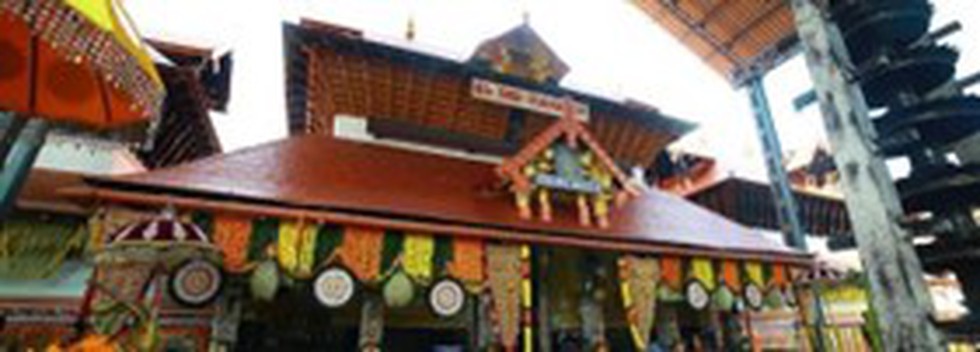
About Guruvayur Temple:
- Guruvayoor Sree Krishna Swamy Temple, also known as the Dwarka of the South, is dedicated to Lord Vishnu and the young form of Lord Krishna.
- It is located in the small town of Guruvayur, in the Thrissur District of Kerala.
- The earliest temple records date back to the 17th century, but other literary texts and legends indicate that the temple may be around 5000 years old.
- Features:
- Lord Krishna, or Guruvayoorappan, is the chief deity of this temple.
- The temple is built in the traditional Kerala architectural style.
- The central shrine is believed to have been rebuilt in 1638 C.E.
- Structures like the Nalambalam (temple structure surrounding the sanctum sanctorum), Balikkal (sacrificial stone), and Deepasthambham (pillar of lights) are situated on the temple premises.
- The wall of the sanctum sanctorum is decked with ancient 17th-century murals.
- Another famous sight here is the Dwajasthambam. It is a flagstaff, around 70 feet tall, fully covered with gold.
- One of the most popular offerings at Guruvayoor temple is Thulabharam, where devotees are weighed against bananas, sugar, jaggery, and coconuts equivalent to their weight on a giant pair of scales.
- The temple is also noted for being home to a large population of captive male Asian elephants.
- The Punnathur Kotta elephant sanctuary, where 56 elephants live, is very close to the temple.
2. What is the Universal Service Obligation Fund (USOF)?

About Universal Service Obligation Fund (USOF):
- USOF was set up by an Act of Parliament in December 2003 by amending the Indian Telegraph Act, 1885.
- The objective of the USOF is to provide access to telecom services in a non-discriminatory manner to people in rural and remote areas at affordable and reasonable prices, thereby bridging the rural-urban digital divide.
- For commercially non-viable rural and remote areas, USOF provides subsidy support in the form of Net Cost or Viability Gap Funding (VGF) to incentivize telecom service providers for the expansion of telecommunications and broadband services in those areas.
- Funding Mechanism:
- The USOF is funded through a levy on the revenue earned by telecom operators.
- The government imposes a Universal Service Levy (USL) on the gross revenue of the telecom companies, which is a percentage of their Adjusted Gross Revenue (AGR).
- This levy is collected and deposited into the USOF.
- Administration:
- USOF is headed by the Administrator, USO Fund who is appointed by the Central Government, for the administration of the fund.
- It is an attached office of the Department of Telecommunications (DoT), Ministry of Communications.
What is the Telecom Technology Development Fund (TTDF)?
- USOF officially launched the TTDF Scheme on October 1st, 2022.
- The TTDF Scheme is aimed at domestic companies and institutions involved in technology design, development, and commercialization of telecommunication products and solutions to enable affordable broadband and mobile services in rural and remote areas.
- This initiative helps to connect schools with varied volunteers from the Indian Diaspora, namely, young professionals, retired teachers, retired Government officials, retired professionals, NGOs, Private Sector and Public Sector Companies, Corporate Institutions, and many others.
- Under the scheme, USOF is also targeting to develop standards to meet countrywide requirements and create an ecosystem for research, design, prototyping, use cases, pilots, and proof-of-concept testing, among others.
- The scheme entails grants to Indian entities to encourage and induct indigenous technologies tailor-made to meet domestic needs.
3. What is an Isopod?
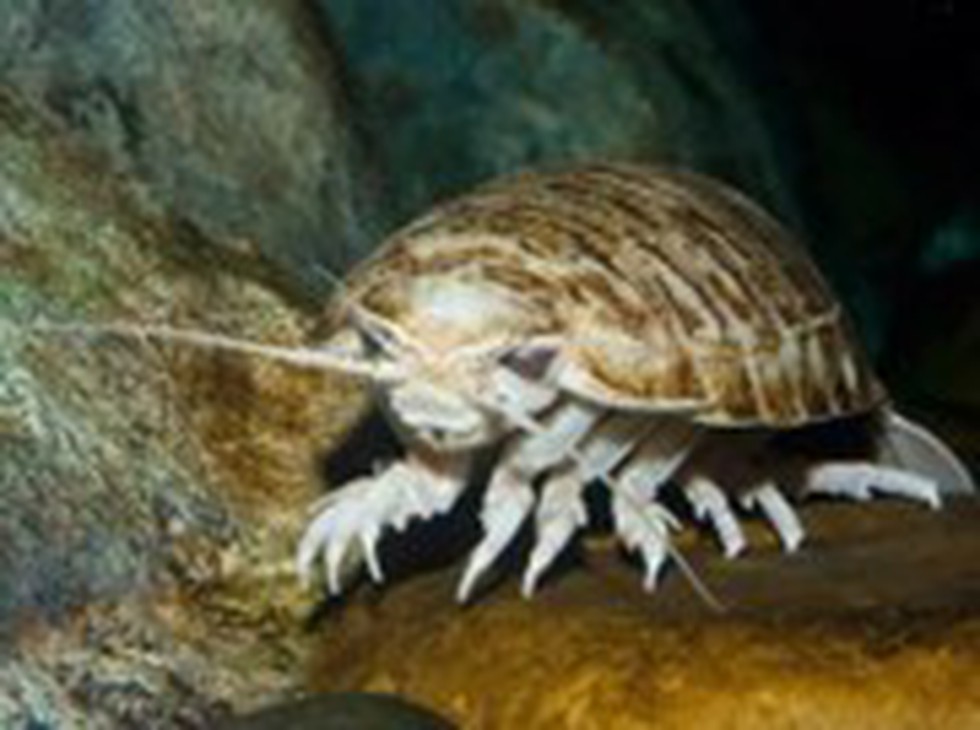
About Isopod:
- Isopods are an order of invertebrates (animals without backbones) that belong to the greater crustacean group of animals, which includes crabs and shrimp.
- Scientists estimate that there are around 10,000 species of isopods (all belonging to the order “Isopoda”).
- They also live in many different types of habitats, from mountains and deserts to the deep sea, and they are distributed worldwide.
- Features:
- They are one of the most morphologically diverse of all the crustacean groups, coming in many different shapes and sizes and ranging from micrometres to a half-metre in length.
- Isopods often do not look alike, but they do have common features. For example, all isopods have two pairs of antennae, compound eyes, and four sets of jaws.
- The body of all isopods consists of seven segments, each with its own pair of walking legs.
- Isopods have a short abdominal section composed of six segments, called “pleons,” and one or more of these segments is fused into a tail section.
- About half of the known species of isopods live in the ocean. Others live in coastal and shelf waters, moving around on the seafloor or living in plants.
- Most are free-living, but a number of marine species are parasitic on other animals.
4. Bhitarkanika National Park

About Bhitarkanika National Park:
- Location: It is located in Kendrapara district in the state of Odisha.
- The national park that is sprawling across 672 km² of mangrove swamp is situated on a delta formed by rivers, namely Brahmani, Baitarani, and Dhamra.
- Proximity to the Bay of Bengal makes the soil of the area enriched with salts; the vegetation and species of the sanctuary are those that are mainly found in the tropical and subtropical intertidal regions.
- It is home to a multitude of mud huts, creeks, backwaters, and estuaries.
- The area was designated as the Ramsar Site in 2002.
- Flora:
- It houses various species of mangrove spread across its forest region, marshy lands, creeks, etc.
- Thespia, casuarinas, sundari, and indigo bush grasses are some of the other varieties of flora that flourish in the area.
- Fauna:
- Bhitarkanika has one of the largest populations of endangered saltwater crocodiles in India.
- Gahirmatha Beach, which forms the boundary of the park in the east, is the largest colony of Olive Ridley Sea Turtles.
- Other mammals include monkeys, jackals, common langurs, otter, sambar deer, jungle cats, fox, Mongoose, wolfs, fishing cats, hyenas, etc.
5. What is Inflammatory Bowel Disease (IBD)?

About Inflammatory Bowel Disease (IBD):
- IBD is a term that describes disorders involving long-standing (chronic) inflammation of tissues in the human digestive tract.
- For some people, IBD is only a mild illness. For others, it's a debilitating condition that can lead to life-threatening complications.
- Types of IBD include:
- Ulcerative colitis: This condition involves inflammation and sores (ulcers) along the lining of your large intestine (colon) and rectum.
- Crohn's disease.
- This type of IBD is characterised by inflammation of the lining of your digestive tract, which often involves the deeper layers of the digestive tract.
- Crohn's disease most commonly affects the small intestine. However, it can also affect the large intestine and, uncommonly, the upper gastrointestinal tract.
- A third category, indeterminate colitis IBD, refers to IBD that has features of both Crohn’s disease and ulcerative colitis.
- Causes: The exact cause of IBD is unknown, but IBD is the result of a weakened immune system. Possible causes are:
- The immune system responds incorrectly to environmental triggers, such as viruses or bacteria, which cause inflammation of the gastrointestinal tract.
- There also appears to be a genetic component. Someone with a family history of IBD is more likely to develop this inappropriate immune response.
- Symptoms:
- IBD causes a range of problems in the colon and rectum, but it can also affect other parts of the body.
- Both ulcerative colitis and Crohn's disease are usually characterised by diarrhoea, rectal bleeding, abdominal pain, fatigue, and weight loss.
- People with IBD may experience flare-ups followed by periods with no symptoms.
- Treatment:
- Although there is no curative treatment for IBD, it’s possible to reduce inflammation and address symptoms with a variety of therapies.
- IBD treatments may include medications, surgery, and a range of diet and lifestyle changes that help reduce inflammation and support the immune system.
6. Chandaka-Dampara Wildlife Sanctuary
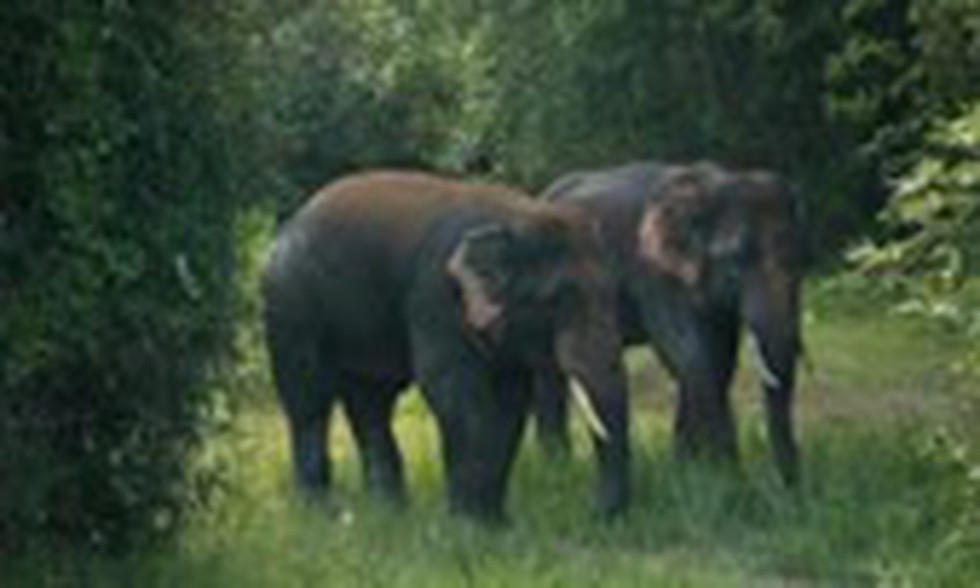
About Chandaka-Dampara wildlife sanctuary:
- It is located in Khurda district of Odisha represents the north-eastern limits of Eastern Ghats.
- It is also a home to a number of threatened wild animals and birds.
- This landscape got sanctuary status in 1982.
- The climate of the area is tropical with three distinct and well-marked seasons i.e. summer, Rainy season and winter.
- Vegetation: Flora is moderately diverse with an intimate mixture of evergreen and deciduous elements. The area comes under semi-evergreen forest zone but the interplay of biotic factors has changed the original character of the vegetation.
- Flora: Dhaman (Grewia Tiliaefolia), Bankapasia (Kydia calycina), Jamu (Syzyggium Cuminii), Gandhana (Premna mucronata), Kansa (Hymenodictyon excelsum), Kusum (Schleichera oleosa), Marua (Vitex pinnata), Sidha (Lagerstroemia parviflora), Karanja, Thorny bamboo etc.
- Fauna: Elephants, Chital, Barking Deer, Wild Boar, Rhesus Monkey, Pangolin, Sloth Bear, Indian Wolf, Hyena and other mammals.
7. Pulikulam Cattle breed

About Pulikulam Cattle breed:
- It is a popular draught and game breed of Tamil Nadu.
- The cattle originated from Pulikulam; a village located in Sivaganga district of Tamil Nadu.
- It is also known as Palingu maadu, Mani maadu, Jallikattu maadu, Mattu maadu and Kilakattu maadu.
- These are maintained as migratory herds, and its draught and manure capabilities play a significant role in the rural livelihood of the communities rearing them for draught and organic agricultural production.
- This breed of cattle is famous for a local game called Jallikattu where bulls are used as a bull-taming sport.
- Pulikulam / Alambadi bulls are dark grey, almost black and cows grey or white.
8. Soligas and Yeravas
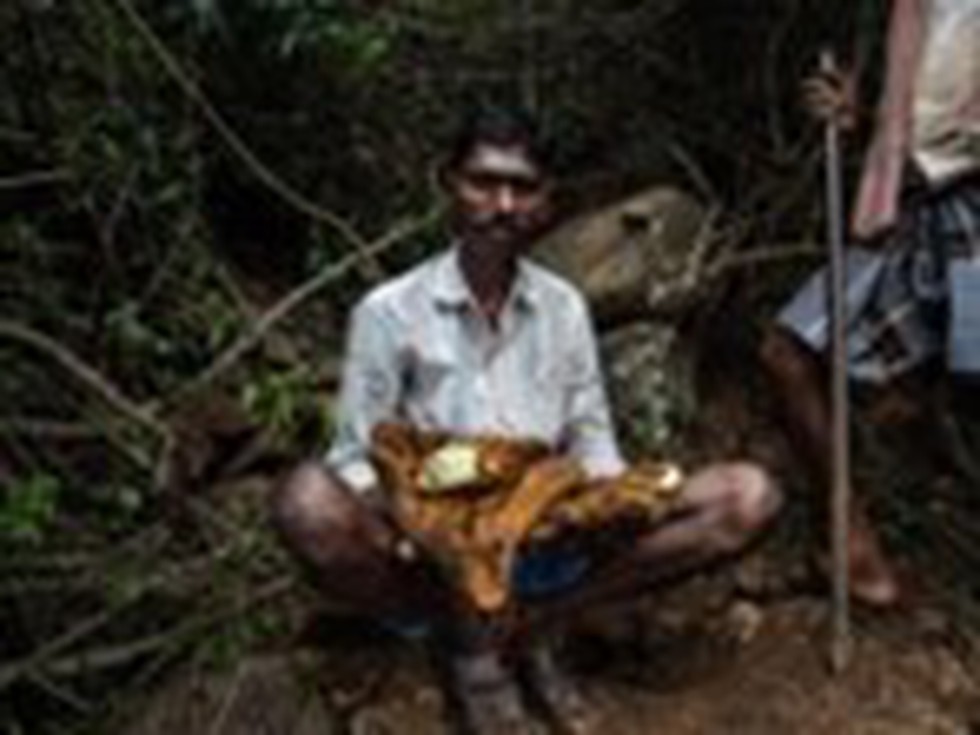
About Soligas and Yeravas:
- Indigenous groups Soligas and Yeravas have been living in the Cauvery Basin and the surrounding hills of peninsular India for thousands of years.
- Soligas, one of the oldest indigenous communities in the country, are the original inhabitants of Karnataka and live mostly in the Chamarajanagar and Mandya districts.
- Honey is an important part of the diet for the Soliga people, who still forage large parts of their food from the biodiversity-rich Ghats.
- They reside in the peripheral forest areas near Biligiri Rangana Hills and Male Mahadeshwara.
- They are the first tribal community living inside the core area of a tiger reserve in India to get their forest rights officially recognised by a court of law.
- Soligas use Silver cockscomb as a nutritious leafy green vegetable, as it is high in nutrients such as beta-carotene and folic acids, and have vitamin E, calcium and iron.
- Also, the scientific community has named a new genus (Soliga ecarinata) of wasp after this community.
Who are Yeravas?
- The Yeravas, on the other hand, came to the state from Wayanad district in Kerala and settled in Kodagu district of Karnataka.
- Yeravas use more tubers than Soligas.
- Language: They speak their own language of Ravula.
- Mushrooms become part of the Yerava diet during monsoon.
- Issues: The food that Soligas and Yeravas depend on for survival is now affected by changes in land use and shifting policies. Worse, traditional knowledge is steadily being lost as young people are migrating out.
9. Jagannath Temple
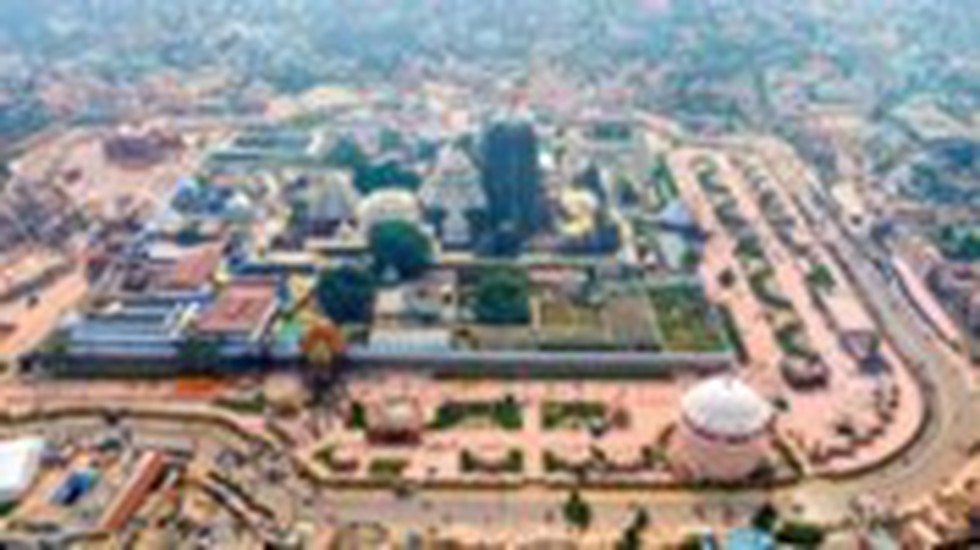
About Jagannath Temple:
- It is located in Puri, Odisha.
- It is one of the most famous and sacred Hindu temples in the world.
- It is dedicated to Lord Jagannath, a form of the Hindu deity Vishnu.
- It is believed to have been built during the reign of King Anantavarman Chodaganga Deva, of the Eastern Ganga dynasty, in the 12th century.
- Architecture: The Jagannath Temple is a striking example of Kalinga architecture, a distinct style prevalent in the Odisha region.
- The temple’s main structure, the sanctum sanctorum, or the garbhagriha, houses the idols of Lord Jagannath, Balabhadra, and Subhadra.
- Ratha Yatra is a Hindu festival associated with Lord Jagannath held at Puri in Odisha.
- The most famous Rath Yatra festival begins on the second day of the bright half of the lunar month of Ashadha (June–July) and lasts for nine days.
10. Distress Alert Transmitter

About Distress Alert Transmitter:
- The first version of DAT has been operational since 2010.
- The fishermen at sea send emergency messages from fishing boats.
- The messages are sent through a communication satellite and received at a central control station (INMCC: Indian Mission Control Centre) where the alert signals are decoded for the identity and location of the fishing boat.
- The extracted information is forwarded to Maritime Rescue Coordination Centres (MRCCs) under Indian Coast Guard (ICG).
- Using this information, the MRCC coordinates to undertake Search and Rescue operations to save the fishermen in distress.
What is Second Generation DAT?
- Taking advantage of technological developments in satellite communication and satellite navigation ISRO has improvised DAT with advanced capabilities and features evolving to Second Generation DAT (DAT-SG).
- The DAT-SG has the facility to send back acknowledgement to the fishermen who activate the distress alert from sea. This gives an assurance to him of rescue coming to him.
- Apart from transmitting distress signals from the Sea, DAT-SG has the capability to receive messages from control centres.
- Using this, advance alert messages can be sent to the fishermen at sea whenever there are events of bad weather, cyclone tsunami or any other emergencies.
- Further, the information about Potential Fishing Zones (PFZs) are also transmitted to fishermen using DAT-SG on regular intervals.
- DAT-SG can be connected to mobile phones using Bluetooth interface and the messages can be read in native language using an App in the mobile.
- The central control centre has a web-based network management system called “SAGARMITRA” which maintains a database of registered DAT-SGs and helps MRCCs to access the information about boat, coordinate the boat in distress in real time.
- This helps the Indian Coast Guard to undertake Search & Rescue operations at the time of distress, without any time delay.

About Indian Tectonic Plate:
- It is a minor tectonic plate.
- It is bound by four major tectonic plates. North of the Indian plate is the Eurasian plate; to the south east is the Australian plate; to the south-west is the African plate; and to the west is the Arabian plate.
- As the Indian plate moves northward relative to the Eurasian plate and collides with it, a convergent boundary is created.
- On the opposite side, the Indo-African boundary is divergent.
- The western Indo-Arabian boundary is lateral relative to each other, giving rise to a transform boundary.
- It was previously thought that the Indian and Australian plates formed one single plate as there is no clear type of boundary but recent seismologic evidence suggests that the two plates will have a transform boundary, as the drift velocities of these two plates are different even if the general direction of motion of the two plates is similar.
- The collision of the Indian plate with the Eurasian plate about 50 million years ago resulted in the erection of the Himalayan Mountains.
- As the Indian plate is still active today and drifts at a velocity of about 5 cm per year, earthquakes occur in the northern part of the plate.


























































































































































.png)
.png)
.png)
.png)
.png)


.png)
.png)
.png)





.png)
.png)






.png)
.png)
.png)
.png)
.png)
.png)
.png)
.png)
.png)

.png)







.png)
.png)


.png)
.png)
.png)


.png)

.png)
.png)





.jpg)

.png)
.png)


.png)

.png)
.png)
.png)

.jpg)

.jpg)


.png)

.png)
.png)
.png)
.png)
.png)
.png)
.png)
.png)
.png)
.png)




.png)

.png)





.png)
.png)
.png)
.png)
.png)
.png)
.png)
.png)
.png)
.png)
.jpg)
.jpg)

.png)
.png)
.png)
.png)
.png)
.png)
.png)
.png)
.png)
.png)
.png)
.png)
.png)
.png)
.png)
.png)
.png)
.png)
.png)
.png)
.png)
.png)



.png)
.png)

.jpg)
.jpg)


.jpg)
.jpg)
.jpg)
.jpg)
.jpg)

.jpg)








.jpg)
.jpg)
.jpg)
.jpg)
.jpg)

















.jpg)
.jpg)







.jpg)


















.jpg)
.jpg)






























































































.jpg)
.jpg)


























.jpg)

.jpg)










.jpg)








.jpg)




.jpg)










.jpg)


















.jpg)












































.jpg)














.jpg)
.jpg)
.jpg)





.jpg)

.jpg)
.jpg)





































































.jpg)


































.jpg)
.jpg)
















































.jpg)












.jpg)


.jpg)




.jpg)
.jpg)
.jpg)

.jpg)
.jpg)
.jpg)
.jpg)

.jpg)
.jpg)
.jpg)

.jpg)
.jpg)
.jpg)
.jpg)
.jpg)
.jpg)
.jpg)
.jpg)

.jpg)


.jpg)
.jpg)
.jpg)
.jpg)
.jpg)
.jpg)
.jpg)
.jpg)
.jpg)
.jpg)











.jpg)
.jpg)





.jpg)
.jpg)
.jpg)
























.jpg)
























.jpg)









.jpg)
.jpg)







.jpg)
.jpg)









































.jpg)
.jpg)
.jpg)
.jpg)
.jpg)

.jpg)
.jpg)
.jpg)
.jpg)
.jpg)


.jpg)
.jpg)
.jpg)
.jpg)
.jpg)

.jpg)
.jpg)
.jpg)
.jpg)
.jpg)
.jpg)
.jpg)
.jpg)
.jpg)
.jpg)
.png)

.png)
.png)

.png)
.png)
.png)
.png)


.jpg)
.jpg)

.jpg)
.jpg)
.jpg)

.png)
.png)
.png)
.png)
.png)
.png)
.png)

.png)
.png)
.png)
.png)
.png)
.png)
.png)
.png)
.png)
.png)





































































-min.png)



.png)




.png)








































